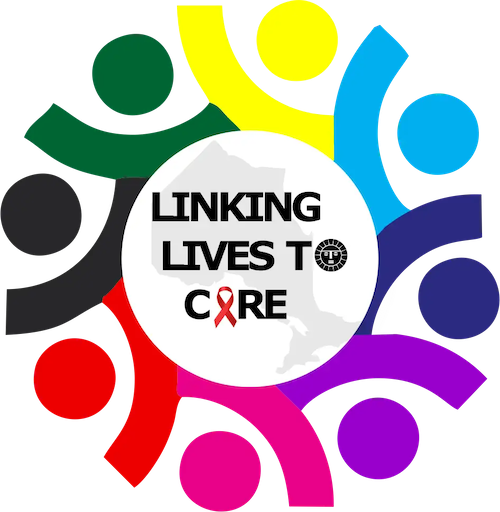HIV Prevention — Linking Lives to Care
The African and Caribbean Council on HIV/AIDS in Ontario (ACCHO) is proud to introduce our new social media campaign, Linking Lives to Care!
Linking Lives to Care is all about helping you understand HIV better. We’re talking about how to prevent it, how to get treatment, and why it’s important. We’re also busting myths about HIV, so you know the truth.
Join us on all our social media platforms (Instagram, TikTok, Twitter, YouTube, and Linkedin) and be part of the conversation about sexual health awareness. Let’s connect and make a difference together!

Know the Facts About HIV Prevention
The first pillar of the campaign is focused on learning how to keep yourself and your loved one’s safe from HIV. Below, you’ll find free resources and downloads, watch and learn in our video series, and know the facts about HIV prevention.
 Safe Injection
Safe Injection HIV Testing
HIV Testing PrEP, PEP & PIP
PrEP, PEP & PIP Condom Usage
Condom Usage Safe Injection
Safe InjectionWhat is Safe Injection (Harm Reduction)?
In African, Caribbean, and Black (ACB) communities, immigrants and refugees encounter various challenges such as language barriers, discrimination, and limited healthcare access.
In the context of HIV transmission, factors such as needle exchange and substance use pose significant risks within ACB communities, especially the immigrant populations.
These communities often face heightened susceptibility to substance use due to systemic barriers and experiences of racism. Additionally, precarious living situations, such as homelessness or unstable housing arrangements like couch surfing, further increase vulnerability to HIV transmission.
These circumstances create a complex web of challenges that compromise the sexual health of individuals within ACB communities. For instance, individuals experiencing homelessness, particularly new immigrants without stable housing, may lack access to essential resources such as condoms or clean needles, increasing the likelihood of engaging in risky sexual behaviors.
Additionally, the stress and instability associated with homelessness or unstable housing arrangements like couch surfing can lead to coping mechanisms like substance use, further exacerbating the risk of HIV transmission through unprotected sexual encounters or needle sharing.
Watch to Learn More about Harm Reduction
Download a list of Harm Reduction Resources (PDF)
 HIV Testing
HIV TestingWhy Should I Get Tested for HIV?
Under the theme “Linking Lives to Care,“ it’s crucial to address the disproportionate impact of HIV on the ACB community. Despite comprising only 4.5% of Ontario’s population, ACB individuals represent a quarter of first-time HIV diagnoses.
During the pandemic, HIV diagnoses declined primarily due to reduced testing caused by fewer visits to health centers, limited outreach services, and a shift of public health staff to COVID-19 response activities.
Untreated HIV can progress to AIDS, but effective therapies exist to control the virus. Therefore, testing and seeking treatment are imperative. There are Antiretroviral drugs that effectively manage HIV, and early diagnosis through testing facilitates access to care and a normal life expectancy.
It is essential to prioritize HIV testing as part of our sexual health, as some individuals may be living with the virus without experiencing symptoms. Undiagnosed individuals are at risk of transmitting the virus and experiencing adverse health effects.
HIV self-testing is available in Ontario and offers individuals the convenience and privacy to test for HIV in the comfort of their own homes, empowering them with greater control over their health. By facilitating easy access to testing and reducing barriers such as stigma and discrimination, HIV self-testing promotes early detection, linkage to care, and ultimately, better health outcomes.
Watch to Learn More About HIV Testing
Download a list of HIV Testing Centres in Ontario
 PrEP, PEP & PIP
PrEP, PEP & PIPWhat is PrEP, PEP & PIP?
PrEP, or pre-exposure prophylaxis, is medicine people at risk for HIV take to prevent getting HIV and if taken consistently, it is highly effective.
PrEP involves taking a daily medication to prevent HIV infection before exposure. It is particularly crucial for individuals at high risk of HIV, including those within ACB communities disproportionately affected by the virus.
Including PrEP into HIV prevention strategies, individuals can significantly reduce their risk of cquiring HIV.
PEP (Post-Exposure Prophylaxis) involves taking antiretroviral medications after potential exposure to HIV to prevent infection. It is a critical intervention for individuals who may have been exposed to HIV through unprotected sex, needle-sharing, or other high-risk activities. ACB individuals should be aware of the availability of PEP and seek immediate medical attention if they believe they have been exposed to HIV.
PrEP has been shown to be highly effective in preventing HIV transmission when taken as prescribed. It provides a protective barrier against HIV for individuals at high risk of exposure, such as those in serodiscordant relationships or engaging in high-risk sexual behaviours. a. PEP significantly reduces the risk of HIV infection if started within 72 hours of potential exposure.
PrEP and PEP empower individuals to take control of their sexual health by providing them with options for HIV prevention.
PrEP and PEP can reduce anxiety and stress associated with the fear of HIV transmission. Knowing that they have access to effective preventive measures can provide peace of mind and improve overall well-being.
PrEP and PEP not only prevent HIV infection but also contribute to improved health outcomes for individuals. By reducing the risk of HIV transmission, they help prevent the development of HIV-related illnesses and complications, leading to better overall health.
Watch to Learn More About HIV Testing
Download a List of PrEP Clinics and Resources in Ontario (PDF)
 Condom Usage
Condom UsageCondom Usage
Condoms are an important tool in preventing HIV. There are many types available in Ontario. You can buy these, or you can often get them at healthcare offices, AIDS service organizations, or other public health sites.
Condoms come in both internal (sometimes called female) and external (sometimes called male) forms. Condoms are best used in combination with a water-based or silicone-based lubricant during anal, vaginal, or oral sex.

Watch to Learn More About HIV Testing
Download a List of Free Condom Centres in Ontario (PDF)
Injection
Testing
Usage
Injection
What is Safe Injection (Harm Reduction)?
In African, Caribbean, and Black (ACB) communities, immigrants and refugees encounter various challenges such as language barriers, discrimination, and limited healthcare access.
In the context of HIV transmission, factors such as needle exchange and substance use pose significant risks within ACB communities, especially the immigrant populations.
These communities often face heightened susceptibility to substance use due to systemic barriers and experiences of racism. Additionally, precarious living situations, such as homelessness or unstable housing arrangements like couch surfing, further increase vulnerability to HIV transmission.
These circumstances create a complex web of challenges that compromise the sexual health of individuals within ACB communities. For instance, individuals experiencing homelessness, particularly new immigrants without stable housing, may lack access to essential resources such as condoms or clean needles, increasing the likelihood of engaging in risky sexual behaviors.
Additionally, the stress and instability associated with homelessness or unstable housing arrangements like couch surfing can lead to coping mechanisms like substance use, further exacerbating the risk of HIV transmission through unprotected sexual encounters or needle sharing.
Watch to Learn More about Harm Reduction
Download a list of Harm Reduction Resources (PDF)
Testing
Why Should I Get Tested for HIV?
Under the theme “Linking Lives to Care,“ it’s crucial to address the disproportionate impact of HIV on the ACB community. Despite comprising only 4.5% of Ontario’s population, ACB individuals represent a quarter of first-time HIV diagnoses.
During the pandemic, HIV diagnoses declined primarily due to reduced testing caused by fewer visits to health centers, limited outreach services, and a shift of public health staff to COVID-19 response activities.
Untreated HIV can progress to AIDS, but effective therapies exist to control the virus. Therefore, testing and seeking treatment are imperative. There are Antiretroviral drugs that effectively manage HIV, and early diagnosis through testing facilitates access to care and a normal life expectancy.
It is essential to prioritize HIV testing as part of our sexual health, as some individuals may be living with the virus without experiencing symptoms. Undiagnosed individuals are at risk of transmitting the virus and experiencing adverse health effects.
HIV self-testing is available in Ontario and offers individuals the convenience and privacy to test for HIV in the comfort of their own homes, empowering them with greater control over their health. By facilitating easy access to testing and reducing barriers such as stigma and discrimination, HIV self-testing promotes early detection, linkage to care, and ultimately, better health outcomes.
Watch to Learn More About HIV Testing
Download a list of HIV Testing Centres in Ontario
What is PrEP, PEP & PIP?
PrEP, or pre-exposure prophylaxis, is medicine people at risk for HIV take to prevent getting HIV and if taken consistently, it is highly effective.
PrEP involves taking a daily medication to prevent HIV infection before exposure. It is particularly crucial for individuals at high risk of HIV, including those within ACB communities disproportionately affected by the virus.
Including PrEP into HIV prevention strategies, individuals can significantly reduce their risk of cquiring HIV.
PEP (Post-Exposure Prophylaxis) involves taking antiretroviral medications after potential exposure to HIV to prevent infection. It is a critical intervention for individuals who may have been exposed to HIV through unprotected sex, needle-sharing, or other high-risk activities. ACB individuals should be aware of the availability of PEP and seek immediate medical attention if they believe they have been exposed to HIV.
PrEP has been shown to be highly effective in preventing HIV transmission when taken as prescribed. It provides a protective barrier against HIV for individuals at high risk of exposure, such as those in serodiscordant relationships or engaging in high-risk sexual behaviours. a. PEP significantly reduces the risk of HIV infection if started within 72 hours of potential exposure.
PrEP and PEP empower individuals to take control of their sexual health by providing them with options for HIV prevention.
PrEP and PEP can reduce anxiety and stress associated with the fear of HIV transmission. Knowing that they have access to effective preventive measures can provide peace of mind and improve overall well-being.
PrEP and PEP not only prevent HIV infection but also contribute to improved health outcomes for individuals. By reducing the risk of HIV transmission, they help prevent the development of HIV-related illnesses and complications, leading to better overall health.
Watch to Learn More About HIV Testing
Download a List of PrEP Clinics and Resources in Ontario (PDF)
Usage
Condom Usage
Condoms are an important tool in preventing HIV. There are many types available in Ontario. You can buy these, or you can often get them at healthcare offices, AIDS service organizations, or other public health sites.
Condoms come in both internal (sometimes called female) and external (sometimes called male) forms. Condoms are best used in combination with a water-based or silicone-based lubricant during anal, vaginal, or oral sex.

Watch to Learn More About HIV Testing
Download a List of Free Condom Centres in Ontario (PDF)
© 2024 ACCHO


